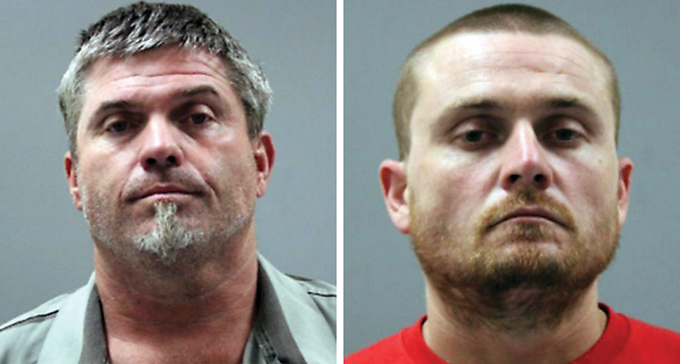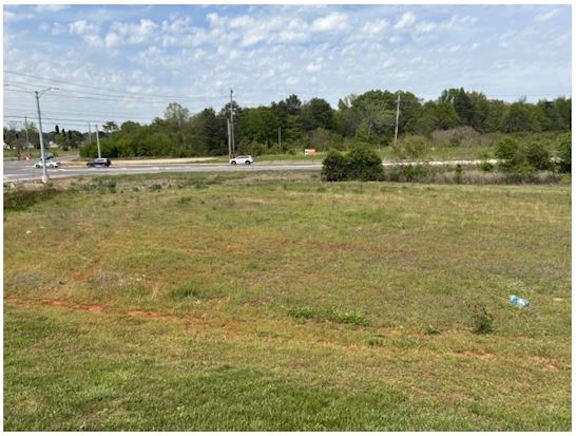Infrastructure funding could boost West Virginia internet connectivity
Published 2:09 pm Thursday, January 4, 2024

- Infrastructure logo
West Virginia finds itself at the bottom of a list of states ranked first to worst for broadband internet service.
An independent study from BroadbandNow, a consumer-centric research and content firm focused on high-speed internet availability, put West Virginia ahead of just one other state, Alaska, in its 2023 overall rankings based on coverage, price and speed. The study incorporates federal data along with data provided voluntarily by internet service providers.
Trending
Roughly 1 in 10 residents of the Mountain State aren’t able to purchase service at the Federal Communications Commission’s standard for broadband: 25 megabits per second download, 3 megabits per second upload.
That standard is outdated. A speed of 100/20 mbps is widely considered the norm for a family home. The FCC is in the midst of updating its own fixed broadband standard to meet 100/20 mbps — a service level unavailable to roughly 2 in 10 West Virginians, good for 44th in the nation.
“Building out infrastructure in rural areas and challenging terrain is very expensive,” said Phil Moye, director of communications, Appalachian Power Co. “Anything you can do to offset that helps.”
The 2021 Bipartisan Infrastructure Law looks to offset such costs across the country to the tune of $65 billion. West Virginia is slated to receive $1.2 billion through the Broadband Equity, Access and Deployment Program.
The infrastructure act passed the U.S. Senate by a bipartisan vote of 69-30 in August 2021, followed in November of that year with passage in the U.S. House on a vote of 228-206.
Votes from West Virginia lawmakers were mixed, with “yes” votes from Republican U.S. Sen. Shelley Capito and former U.S. Rep. David McKinley.
Trending
The state’s first announced project belongs to Appalachian Power. The electric utility received more than $25 million — about half the total project cost — toward running 600 miles of new “middle-mile” fiber optic cable aboveground in McDowell, Mercer, Raleigh, Summers and Wyoming counties. About 300 miles of the cable is already in place in the project area.
Summers County is among the roughest spots for high-speed internet, a map from the West Virginia Broadband Council shows. Beyond the small cities where broadband is available, service is spotty at best.
Rebecca Peterson serves as executive director of the New River Gateway Convention and Visitors Bureau in Summers County. Outdoor tourism is growing as a result of the New River Gorge National Park & Preserve and other attractions, she said.
The county is also proving attractive for prospective residents looking to live in a rural area and work from home. But the lack of high-speed internet is a problem for that, leaving some to seek properties in more urbanized sections of the county.
She lives rural, too, and says her service at home is equivalent to a dial-up connection.
“I rely on my cellphone carrier or a personal hotspot,” Peterson said.
Peterson said she knows poor service in rural areas challenges merchants whose businesses rely on the internet, like small artists who sell their paintings and pottery online.
“A lot of artists live in the middle of nowhere. They do struggle if they have an online studio,” Peterson said.
Middle-mile connections serve to entice internet service providers to come into an area and complete “last-mile” connections to potential customers — in this case, about 22,000 households and businesses.
According to Moye, Appalachian Power is in the process of selecting an ISP partner. It will then seek final project approval by year’s end from the Public Service Commission of West Virginia.
The middle-mile project is similar to one Appalachian Power is already undertaking in Logan and Mingo counties, with 363 miles of fiber optic cable to be installed. Moye said the project looks to be completed in 2024. GigaBeam is the last-mile ISP partnered for the project. An estimated 13,000 homes and businesses could benefit.
“People may ask why an electric utility is involved. It makes fantastic sense because electric infrastructure goes deep into rural areas already. Every hill, hollow, pretty much anywhere people are living there’s electricity. That infrastructure is already out there,” Moye said.
The Bipartisan Infrastructure Law provides much more than funding for broadband expansion.
West Virginia is set to receive $3.4 billion for 154 different projects announced so far, according to the White House.
Transportation projects announced so far total about $1.6 billion. That includes $25 million toward the construction of a four-lane, 15-mile segment of the Coalfields Expressway, from Route 16 to Mullens in Wyoming County.
Another $13.5 million was allocated to a five-mile stretch of the expressway near the city of Welch in McDowell County to the Wyoming County line.
The entire expressway project looks to connect the West Virginia Turnpike at Beckley and U.S. Route 23 in Slate, Virginia. A 2021 report by Chmura Economics & Analytics estimated that the entire Coalfields Expressway would cost $3.1 billion to complete and result in a $12.8 billion cumulative economic impact across 50 years.
Another aspect to federal infrastructure funding is investment in climate, energy and environment.
Within that, $177 million was made available in each of the past two fiscal years to improve drinking water across West Virginia. About $57 million was dedicated to lead pipe and service line replacement. Another $39 million was tabbed for similar safe drinking water investments that was eligible to support lead pipe replacement projects.
There’s also a combined $12.5 million announced for 10 brownfields projects, either assessments or cleanups, including in Morgantown and Paden City. The West Virginia University Research Cooperation would receive $5 million of the combined total toward providing technical assistance to local communities in the cleanup, revitalization and reuse of brownfields.





